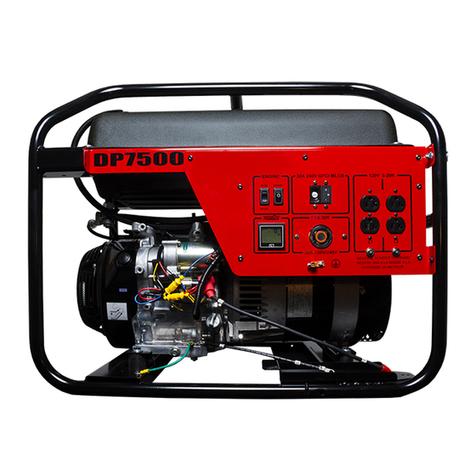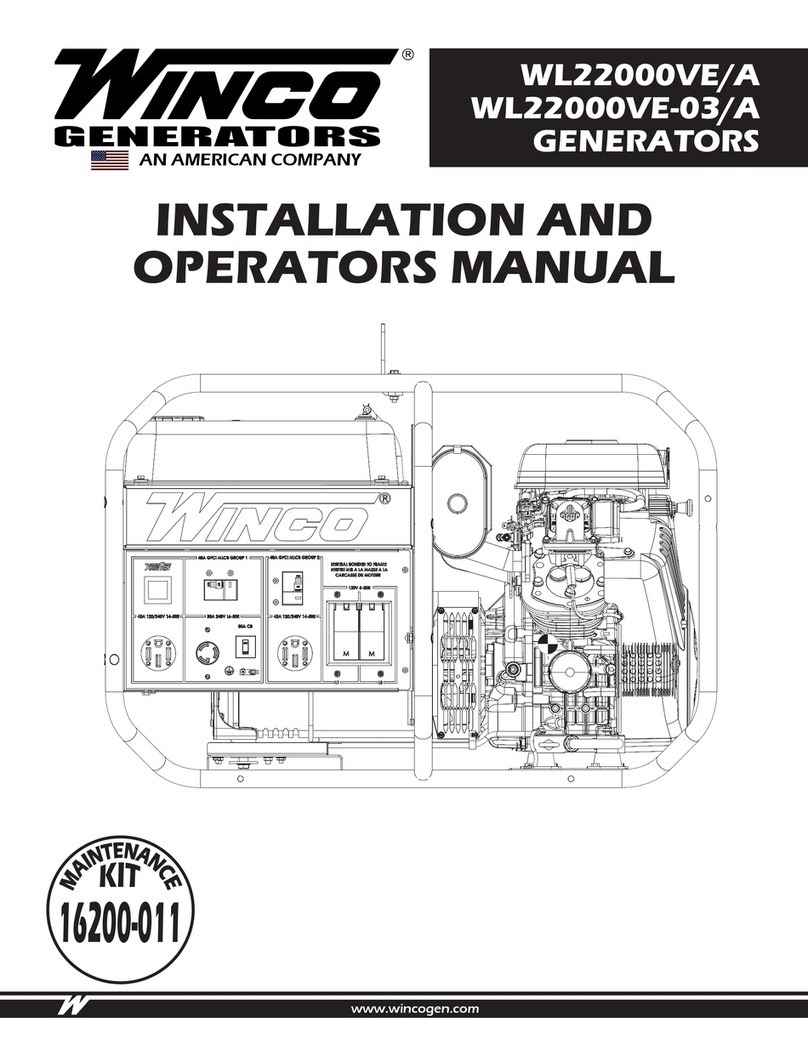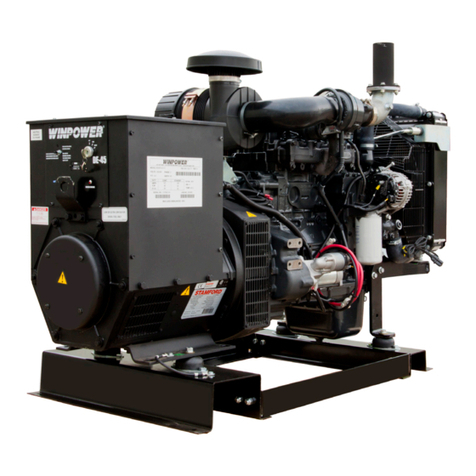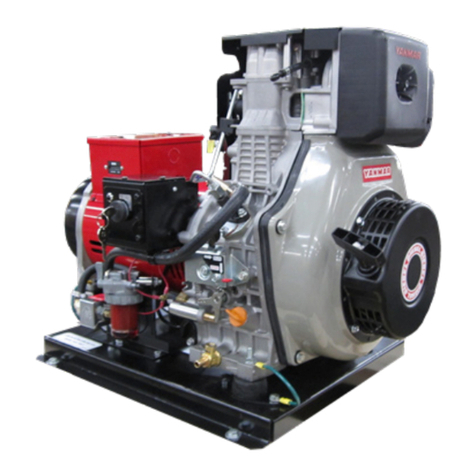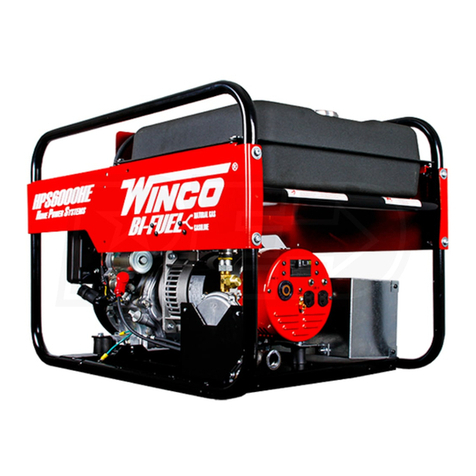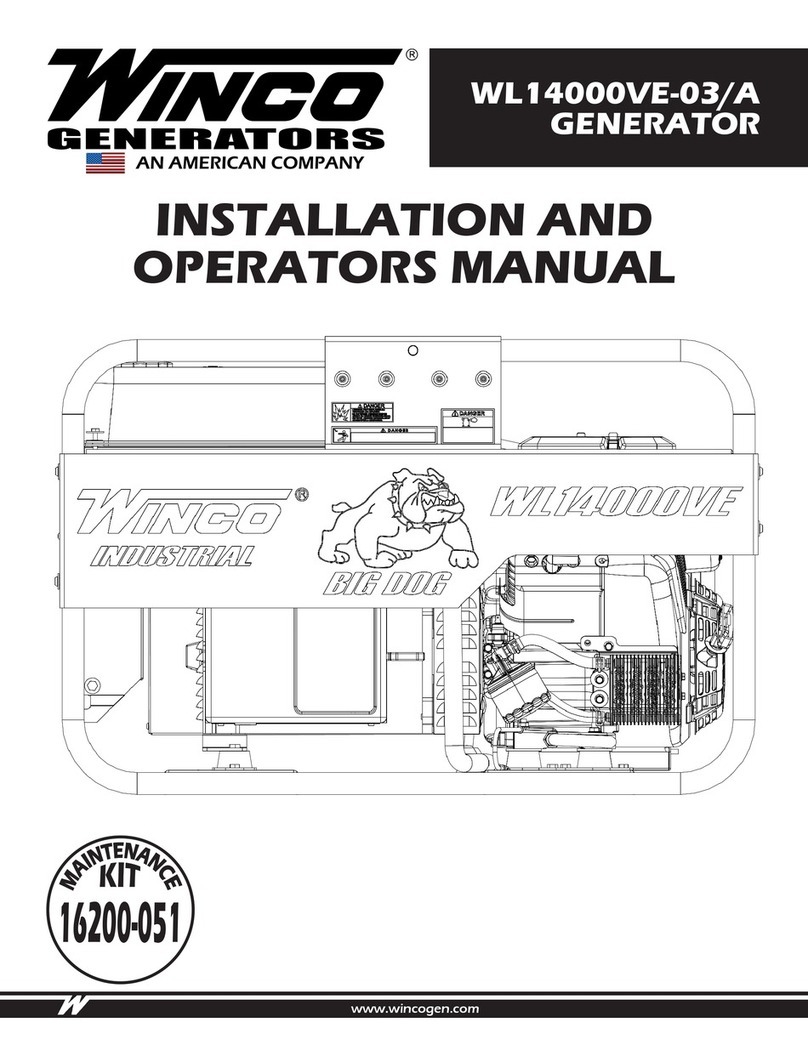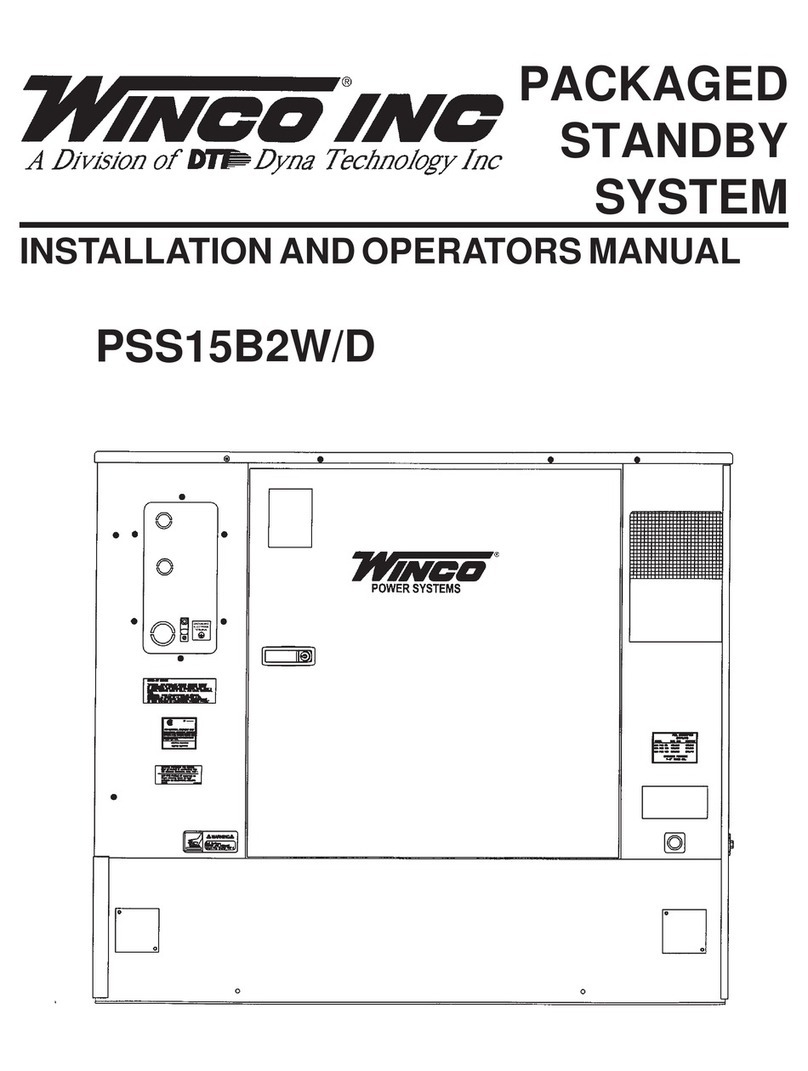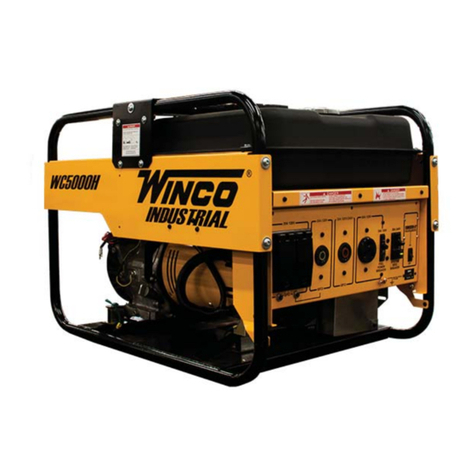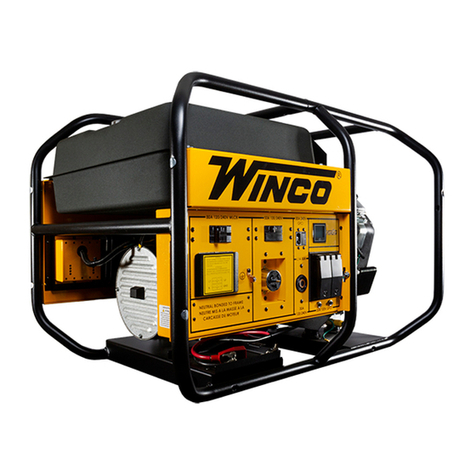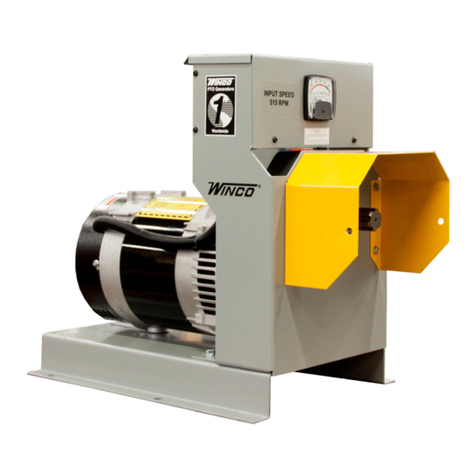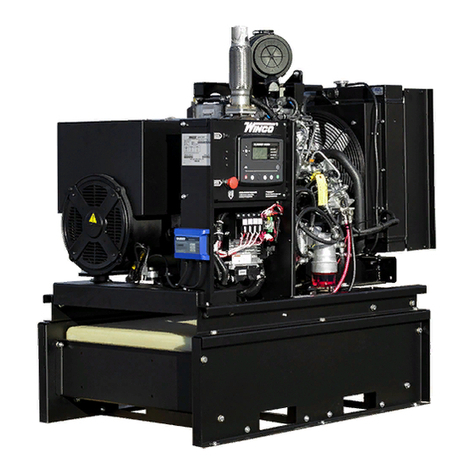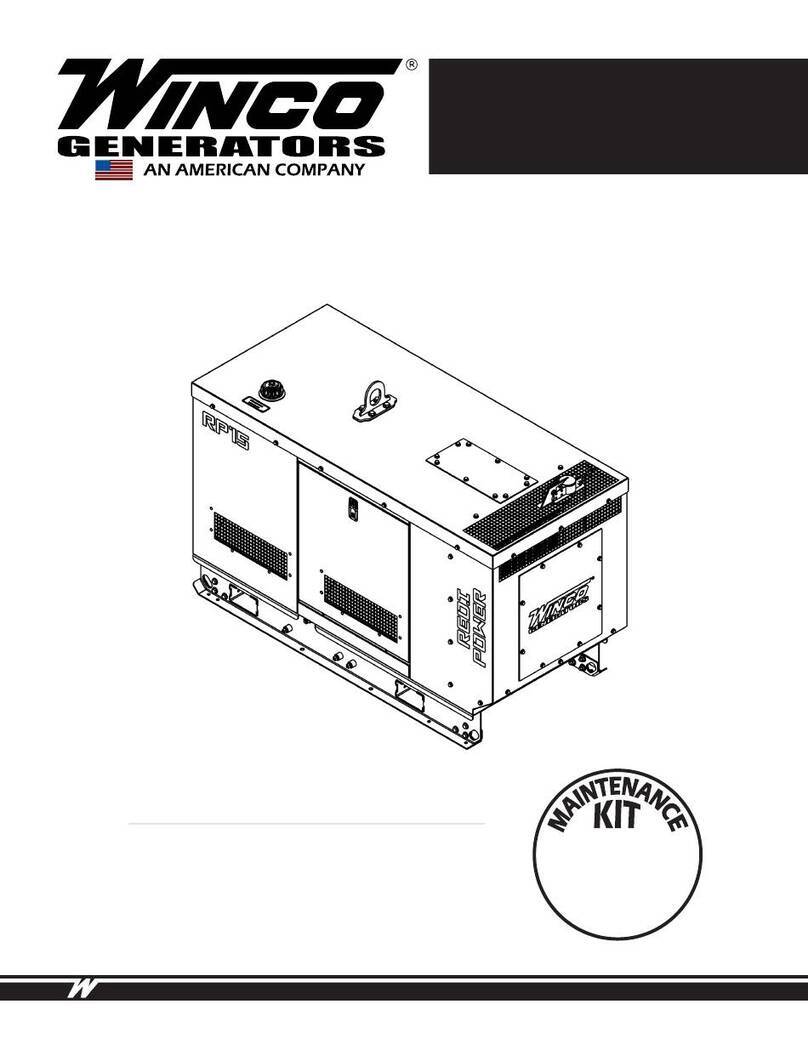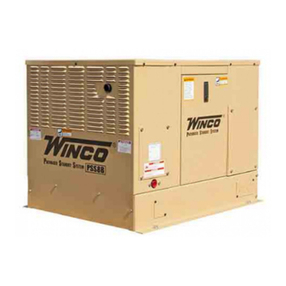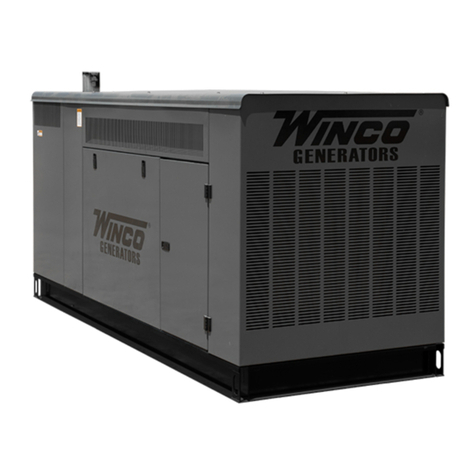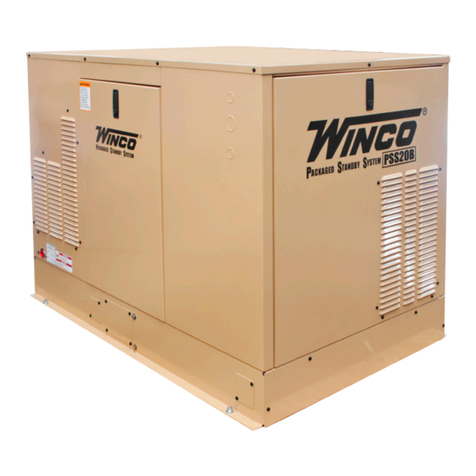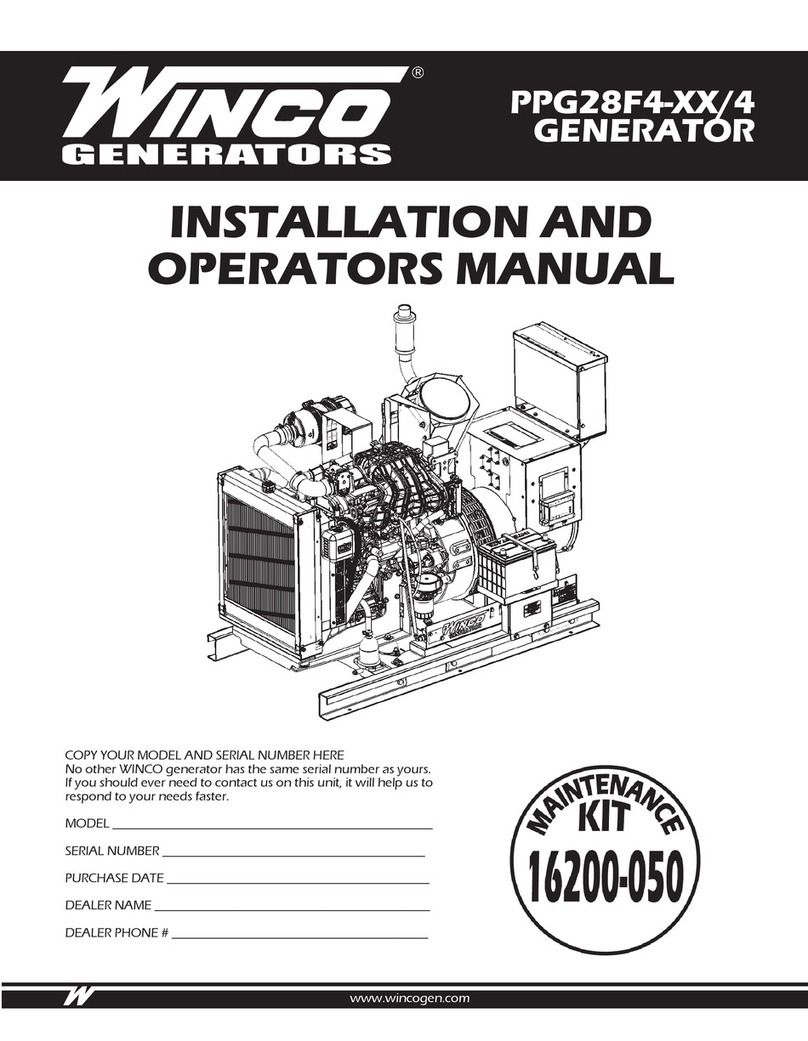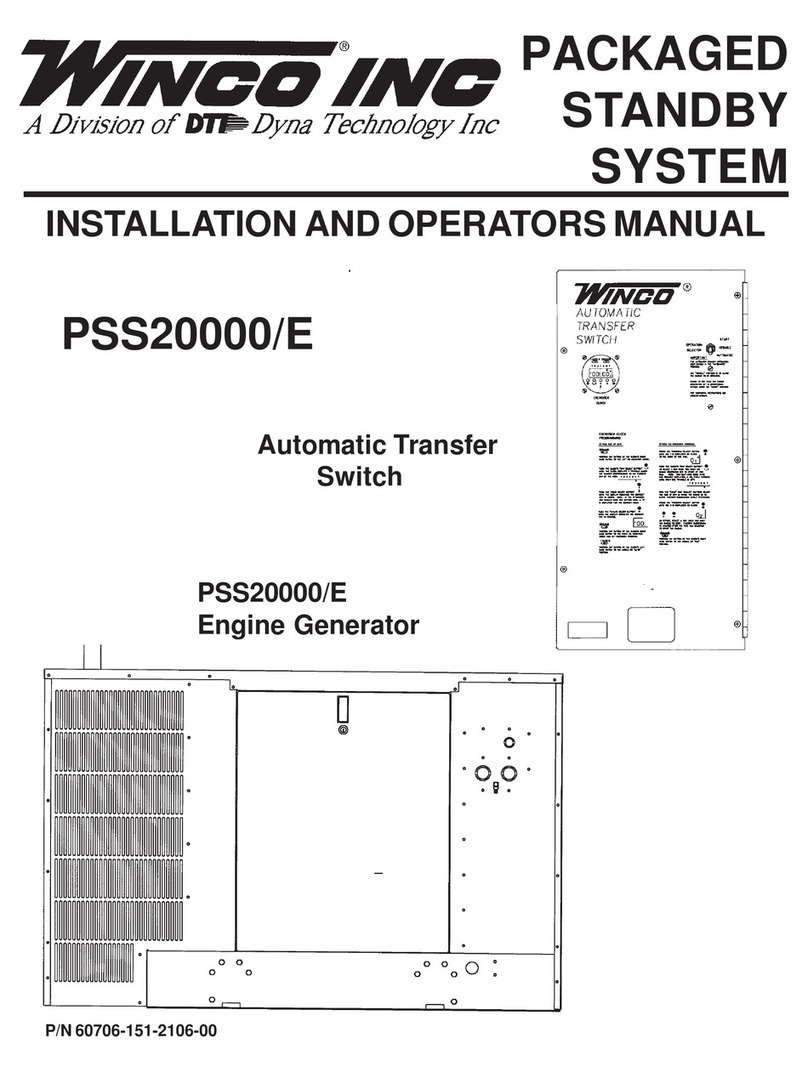
8
OPM-135/D
Open skid mounted Diesel units are often supplied with
capped inlet and return lines. The use of a sustainable
customer supplied flexible fuel line is essential between
the engine and fuel supply to provide a vibration break
between your fuel supply and the engine.
A.C. ELECTRICAL CONNECTIONS
NOTICE: CLASS 1 WIRING METHODS ARE TO BE USED FOR
ALL FIELD WIRING CONNECTIONS TO TERMINALS OF A
CLASS 2 CIRCUIT
WARNING
A mainline circuit breaker has been provided inside the
generator housing. During all wiring installation, make
sure the breaker is in the off position and the generator is
disabled.
WARNING:
Make sure the generator is disconnected from the battery
to prevent accidental starting.
The connection box shown are typical arrangements.
A. NEUTRAL LUGS:
These lugs are isolated from ground and provided for you
to connect your neutral wire from the transfer switch to the
generator.
The 225 Amp terminal block lugs will handle wire size #4 to
300 MCM and should be torqued to 250 in. lbs.
B. GENERATOR CIRCUIT BREAKER:
This circuit breaker provides overload protection for the
generator. Your power feeds from the transfer switch
will connect the bottom lugs on the circuit breaker. The
generator power feeds have already been wired into the
upper lugs.
Please refer to the circuit breaker installed on your unit for
breaker lug capacities and proper toque specifications.
To select the proper conductor size between the generator
and the ATS, first look your model up in Table 1 of Appendix
“A” for your generator amperage, found further in this
manual. Then refer to Appendix “2” for guidance on wire
sizing based on both wire type and amperage.
For additional information on wire sizes, refer to table 310-
16 of the National Electrical Code ANSI/NFPA 70.
C. GROUND LUG:
These ground lugs are bonded to ground and are provided
for you to connect your ground wire from the transfer
potential for contact with people is controlled. Exhaust can
enter buildings through windows, ventilation systems and
other openings if proper precautions are not followed.
The exhaust must be isolated from the vibration of the
engine. If the exhaust is connected in a rigid system it will
result in damage to the engine. The generator comes
equipped with an engine mounted flex pipe to aid your
installation. Ensure proper alignment with the generator.
The flex can be eliminated if it is pushed to one side to make
a connection.
The most direct path possible should be used to get to the
outside of the enclosure. Each bend restricts the pipe and
increases back pressure. It may be necessary to increase the
exhaust pipe diameter in some applications.
The exhaust pipe is very hot. When passing through the
structure it is critical that a thimble or other appropriate
technique is used to dissipate the heat and prevent the
structure from catching on fire.
It is preferable to exhaust out the side of the enclosures.
Slope the pipe slightly downward away from the engine
to cause any water in the exhaust to run away from the
engine. Do not exhaust near intake. Once outside the
enclosure a rain cap or other technique must be used to
keep water out of the exhaust. In mobile applications make
sure the rain flap faces to the rear of the vehicle so that it is
not blown open during transportation.
The generator ships with a critical grade muffler that should
be installed to decrease noise. It can be mounted either
internally or externally to the enclosure. The muffler cannot
increase back pressure to more than 0.725 psi.
INSTALLING THE FUEL LINE
WARNING: FIRE DANGER
Connecting rigid fuel line (i.e. steel or copper line) directly
to the inlet fuel filter or fuel pump may cause the fuel line
to crack during operation creating a serious fire hazard.
The fuel supply should be as close to the engine as
possible. This will reduce the installation cost of fuel runs
and minimize line losses. The diesel fuel supply should be
no more than 3 feet below the fuel inlet on the pump. If
your fuel supply is lower than three feet you may have to
install an additional lift pump to bring the fuel up to the
mechanical fuel pump on the engine.
The information in this manual is offered to assist you in
providing the proper fuel for your engine. However, this
information is only provided to inform you of the engine’s
requirements and assist in making you aware of the
decisions you must make. In no case should the instructions
or information provided be interpreted to conflict with any
local, state, or national codes. If in doubt, always consult
your local fire marshal or fuel supplier.
Engine generator sets are properly adjusted before they
leave the factory. Connecting a fuel supply with adequate
supply volume is critical to reliable operation. Diesel units
with optional base mounted fuel tanks are pre-plumbed to
the mechanical fuel pump on the engine.
